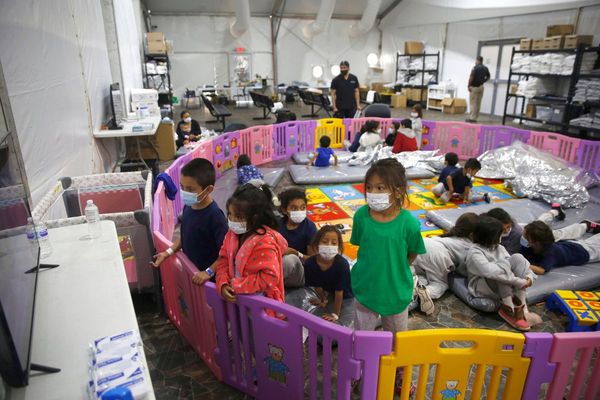The internet is already a risky place for kids, but the rise of artificial intelligence has introduced a disturbing new danger: deepfakes. These are hyper-realistic videos or images generated by AI that can place a child’s face or voice into content they were never a part of. From fake school videos to criminal schemes, the deepfake threat is growing fast—and most parents don’t even realize it’s happening. Knowing the ways these synthetic creations are being used against children is the first step toward defending your family. Below are nine serious ways deepfakes are being used online to target or exploit kids, along with tips to help you stay one step ahead.
1. Deepfake Bullying Videos Circulated on Social Media
AI tools can now create realistic videos of kids doing or saying things they never actually did, all with a few clicks. Bullies are using these videos to humiliate classmates by placing their faces into inappropriate or embarrassing content. These clips are then shared on social platforms, spreading false stories that damage a child’s reputation. The emotional toll can be devastating and long-lasting. Parents should talk to their children about the deepfake threat and monitor social interactions for signs of cyberbullying.
2. Deepfaked Audio Used to Mimic a Child’s Voice
It only takes a few seconds of recorded audio for AI to mimic someone’s voice, and kids are no exception. Scammers have used deepfaked voices of children to call parents, pretending to be in danger and asking for money. These scams often create panic and can lead to quick, irrational decisions. If you receive a distressing call, always hang up and try to reach your child through a trusted source before responding. Educating children about voice privacy can help reduce the chances of their voice being captured and misused.
3. Inappropriate Deepfake Content Shared Without Consent
One of the darkest corners of the internet involves the use of deepfake tools to place children’s faces into adult or inappropriate content. These synthetic images may look disturbingly real and are often shared on private forums or dark web platforms. Even photos posted on innocent family blogs or social media pages can be misused for this purpose. The best way to protect your child from this deepfake threat is to limit how and where their photos are shared online. Report any misuse immediately to the proper authorities and platforms.
4. Deepfake Homework Cheating Tools Using Kids’ Likenesses
Some AI tools have begun offering “virtual” students that mimic real children to submit videos for online schoolwork, fooling teachers during virtual learning. A deepfake can show a child nodding or reading answers, even if the student never actually showed up. While some students may see this as a shortcut, it’s dishonest and could lead to academic consequences or suspensions. It also opens the door for someone else to impersonate your child online. Encourage transparency and open dialogue about online education practices to keep your child on track.
5. Deepfake Threats Used for Sextortion Scams
Predators have started using deepfake images of children to trick victims into thinking compromising material already exists. They’ll threaten to release these fakes unless the child or parent sends real images or money. The fear caused by these scams can pressure kids into making devastating decisions. Always assure your child they can come to you if they ever feel scared, even if something seems embarrassing or extreme. This kind of trust is your first line of defense against the deepfake threat.
6. Deepfakes in Gaming Platforms and Virtual Avatars
Gaming platforms often allow kids to use avatars or face-mapping tools, but some users are now uploading deepfakes that replicate other children. This can lead to impersonation, online harassment, or manipulation within gaming communities. Children may not even realize their face is being used by someone else. Encourage kids to use anonymous avatars rather than real photos and regularly check who they’re interacting with in-game. Parental control settings are essential when gaming becomes part of your child’s daily routine.
7. Deepfake Scams Targeting Grandparents and Relatives
Using social media photos and voice samples, scammers create deepfake content of kids to trick older relatives into sending money or personal information. These scams rely on emotional reactions, especially when they sound like a child asking for urgent help. Make sure all family members are aware of this deepfake threat and never act on emotional calls without verifying through another source. Families should create safe words or verification phrases for emergencies to prevent being fooled.
8. School-Based Deepfake Pranks That Spiral Out of Control
Some kids are experimenting with deepfake apps to prank teachers or classmates, such as creating fake videos of students fighting, swearing, or misbehaving. While it may start as a joke, the consequences can be serious, including school suspensions or legal trouble. Schools are beginning to implement policies specifically addressing synthetic content misuse. Educate your kids on the potential consequences before they get swept up in what seems like a harmless prank. Remind them that not everything AI makes is funny or safe.
9. Deepfake Kid Influencers Created to Push Products
Brands and influencers have started using synthetic kids—digital characters made from deepfake technology—to sell products or promote content. These characters look and sound like real children but are entirely AI-generated. While not dangerous in all cases, they can blur the lines between real and fake for young viewers and create unrealistic expectations. Teach your child to question online personas and understand what is real versus what is created for clicks or sales. Building media literacy now helps them navigate an increasingly artificial future.
Raising Digital Defenders Starts at Home
The deepfake threat isn’t science fiction anymore—it’s happening now, and kids are squarely in the crosshairs. But there’s power in awareness, and families that talk openly about online risks build strong defenses. You don’t need to be a tech expert to take action. Keep communication open, be curious about what your kids are doing online, and remind them that your home is a safe place to share anything they encounter. Your guidance is the best security system they have.
Have you had to deal with a deepfake threat or suspicious content involving your child? Share your insights or questions in the comments below.
Read More:
Bypass Alert: 9 Online Threats That Bypass Parental Controls
Teaching Kids How to Recognize and Escape Dangerous Situations
The post Deepfake Threat: 9 Online Threats Using Deepfakes of Kids appeared first on Kids Ain't Cheap.








